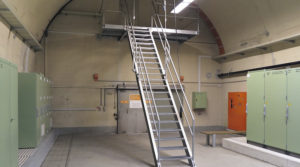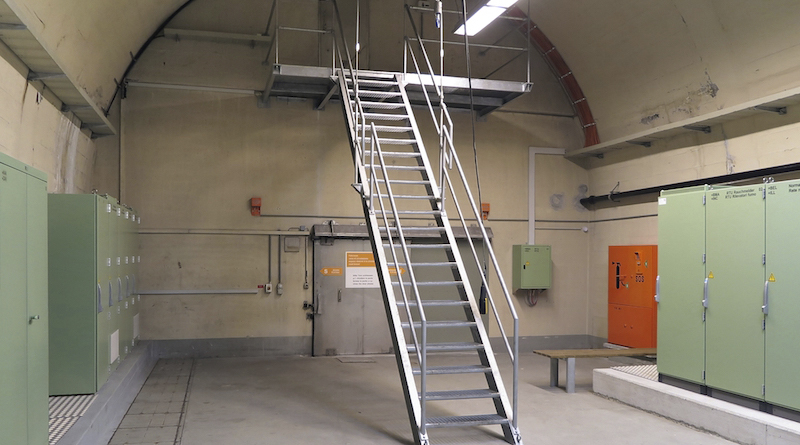Debate: Should Your School Have a Safe Room?
By Daedalus Howell
The term “safe room” has two meanings when it comes to our nation’s learning institutions. One is a space provided by schools so students can convene privately and speak candidly about their experiences. The other is a structure than may stymie the violence of a gunman or protect in a natural disaster. Both safe rooms are important and both can arguably save lives. One, however, requires slightly more engineering and design savvy when it comes to protecting students — especially for schools on a budget.

Modular safe room solutions that meet the Federal Emergency Management Agency (FEMA) standards have become popular in recent years as more districts anticipate increased occurrences of on-campus gun violence and unpredictable, extreme weather events. Moreover, the plug-and-play systems require little if anything in the way of structural retrofitting for facilities constructed in less, as the proverb goes, “interesting times.”
In technical terms, a safe room is a location where school faculty and students can quickly access refuge from incidents of potential violence or natural disasters such as tornados. A staple in high-risk settings such as embassies and other government buildings, safe rooms capable of withstanding gunfire and moderately sized explosions have only recently been explored as a possible school safety feature.
“Growing up in Houston, the middle school I attended was built in the mid-1920s. It had massively thick walls of concrete and brick. This technique was to deal with the Houston heat and occasional hurricane,” recalled Pablo Solomon, an internationally recognized independent designer, known for his environmentally friendly landscape design and historic buildings restoration.
Solomon pointed out that, during the Cold War, his school had a large underground basement complex for boilers, gym lockers that was modified into a fallout shelter.
“As young teens, we actually felt somewhat safer knowing that, should the Russians attack, we had a chance of survival. Our biggest worry was if our families could get to the school in time,” said Solomon.
In the ’90s, Solomon served on the school board of a charter school northwest of Austin, Texas, where he had the opportunity to put some of his experience into practice.
“We had a beautifully scenic location in the hills. While we could only afford to have pre-fab metal buildings for classrooms, offices and the cafeteria, we did spend money to build a centrally located concrete bunker in a hillside to provide shelter for the students and faculty in [the event of a tornado], which in that area is a constant risk,” said Solomon. “So yes, I feel that all schools should have emergency shelter available.”
Attorney Matt Pinsker, an attorney and law professor who practices at Pinkser Law in Virginia, has a different answer as to whether or not schools should have safe rooms.
“Absolutely not,” said Pinsker, who is a professor of criminal justice and homeland security at Virginia Commonwealth University. “These fortified structures are incredibly expensive. Despite all of the media coverage given to incidents at schools, statistically schools are one of the safest places to be.”
Key to Pinkser’s argument is that the relatively lack-of-use safe rooms experience doesn’t justify their expense.
“Such rooms would almost never get used, making these expensive rooms not cost effective. And in many nonrural areas, you cannot justify the use of square footage for a room that is never used,” suggested Pinsker. “Even if it were cheap or if schools were as dangerous as portrayed by the media, you still have the logistical issue of getting people into these rooms. Fire drills outside are chaotic enough. Now imagine, during such an emergency, marshaling kids down crowded hallways into crowded rooms. In doing so, you expose them to the harm.”
Though the Austin charter school for which Solomon served on the school board never endured the devastation of a tornado, the shelter has been used in a precautionary manner.
“So far, the school has not had a direct hit, but the students have been sheltered just in case on several occasions,” he recounted. “And frankly, I find it appalling and negligent that not all schools have such precautions already.”
The debate is likely to continue as school administrators weight the pros and cons of safe rooms on campus. Correctional News invites you to join the debate in the comments section below.

